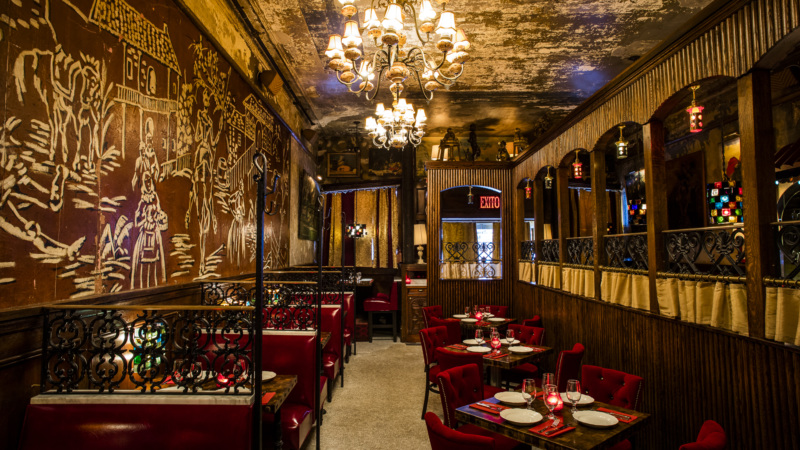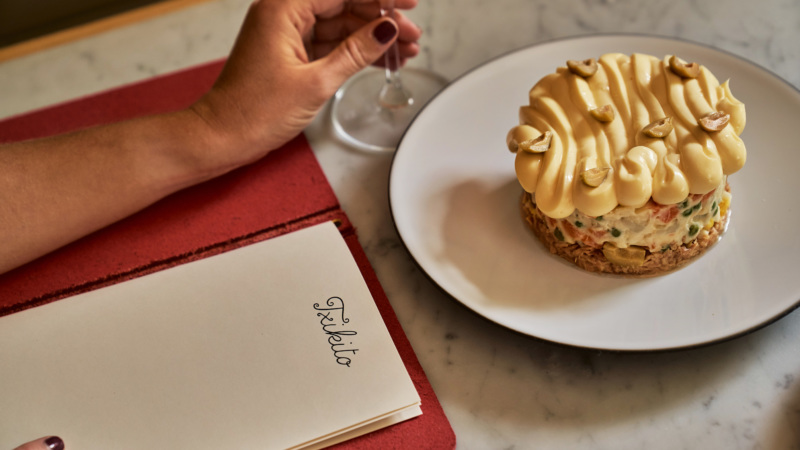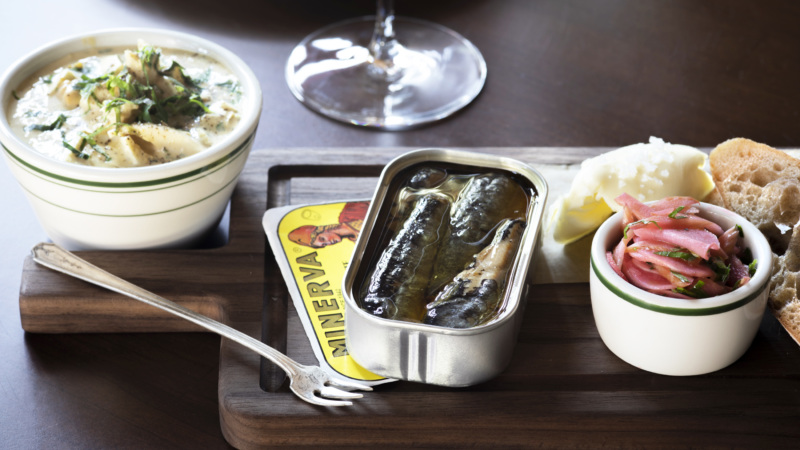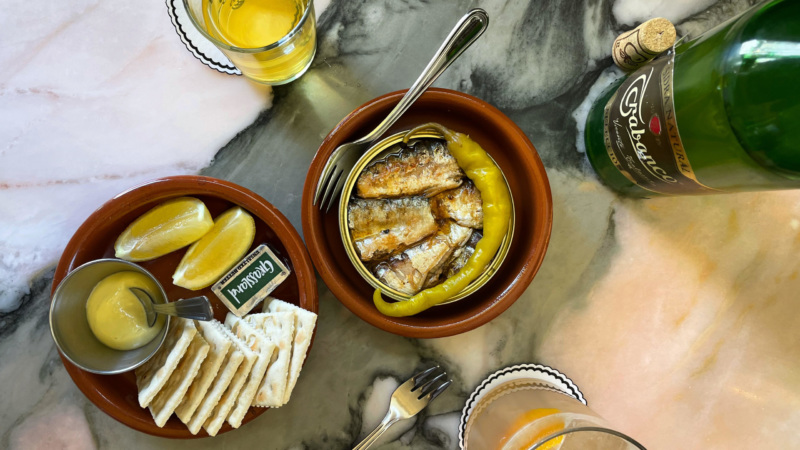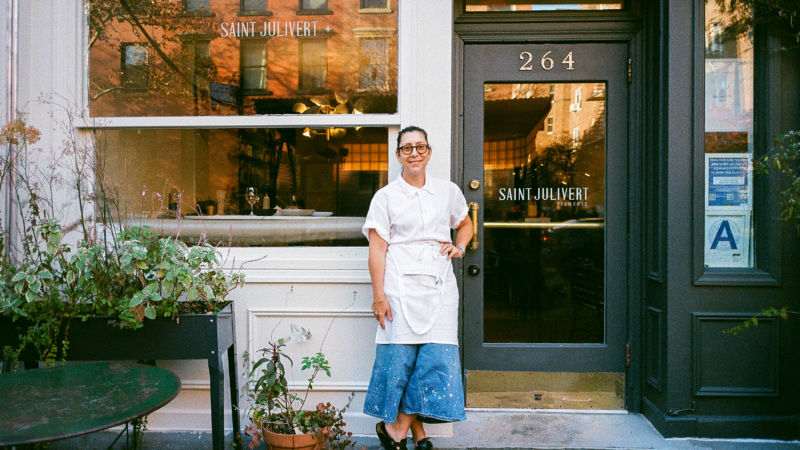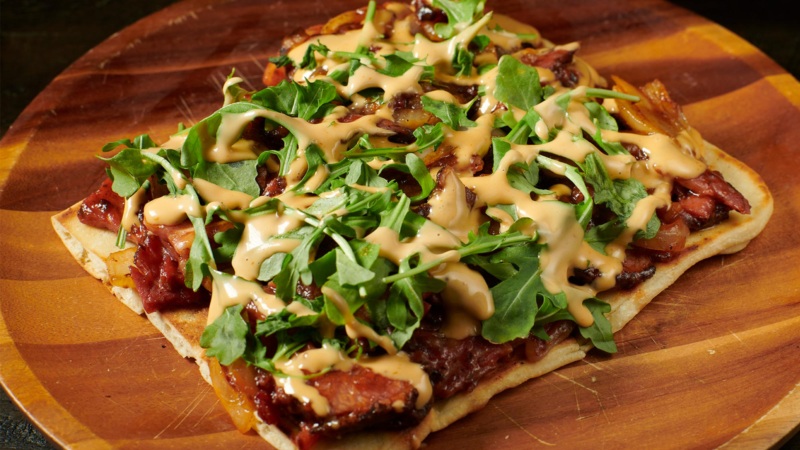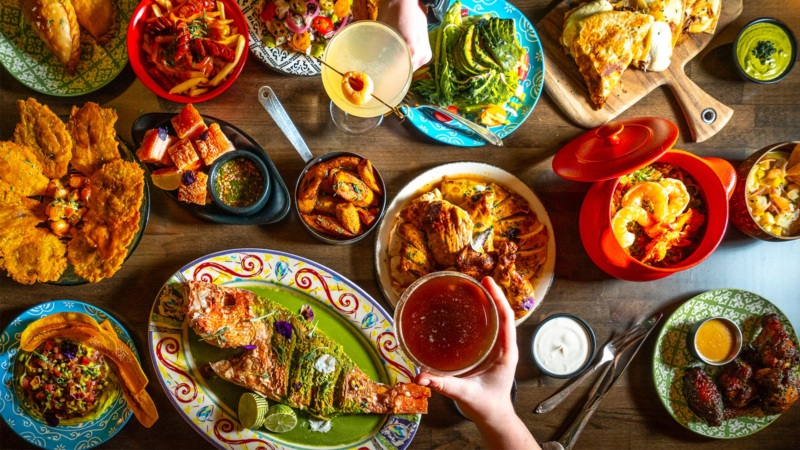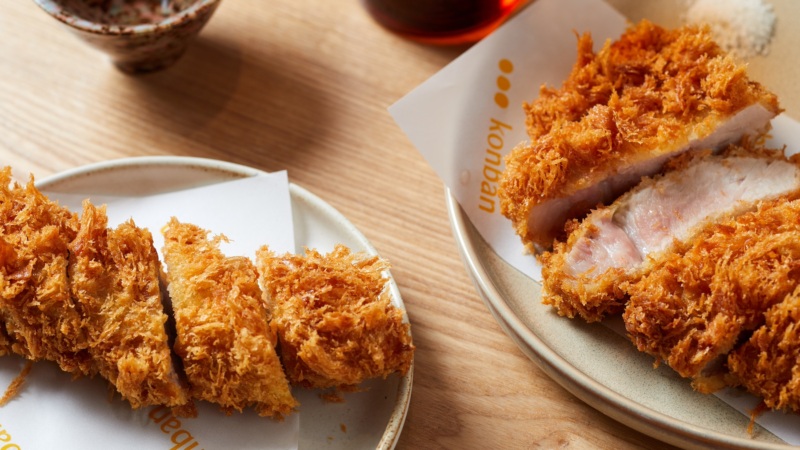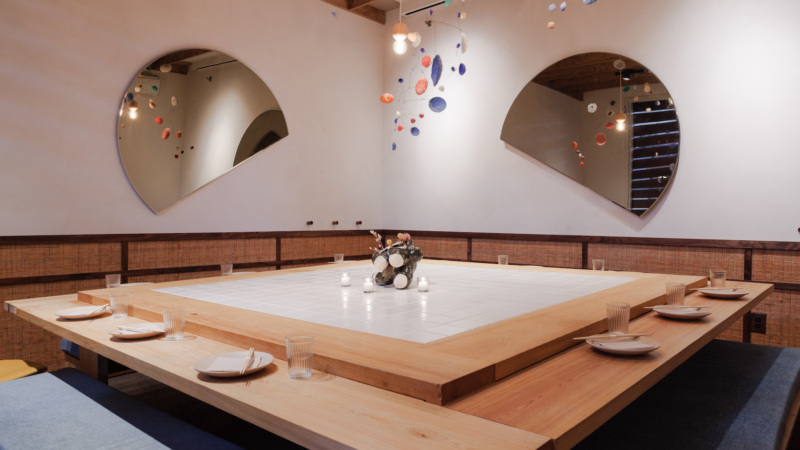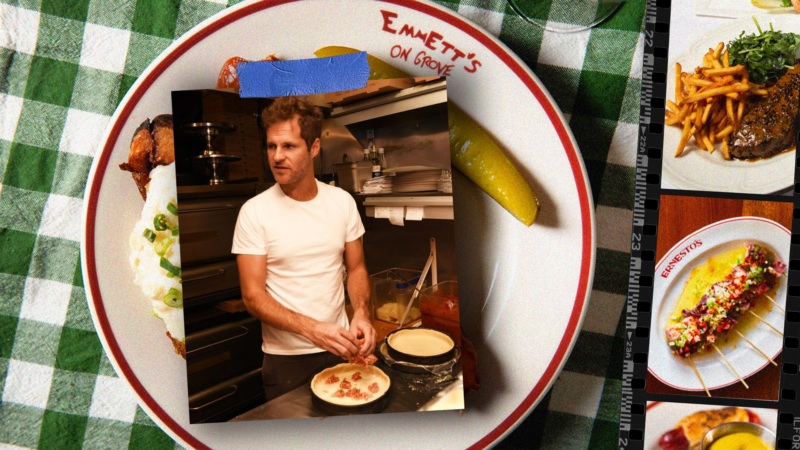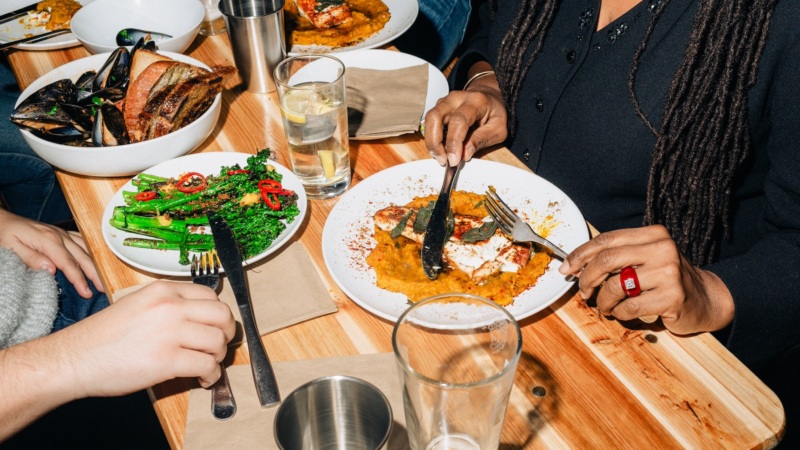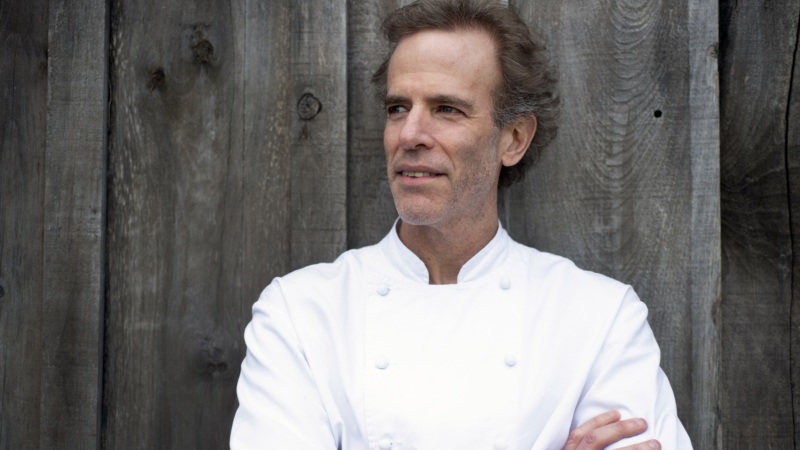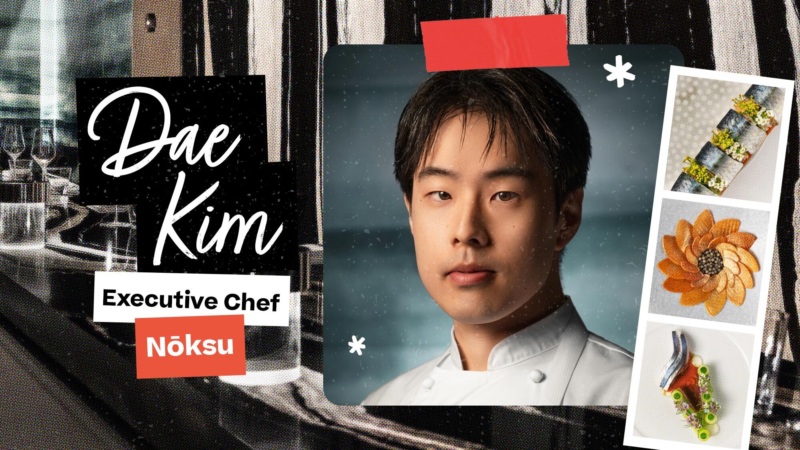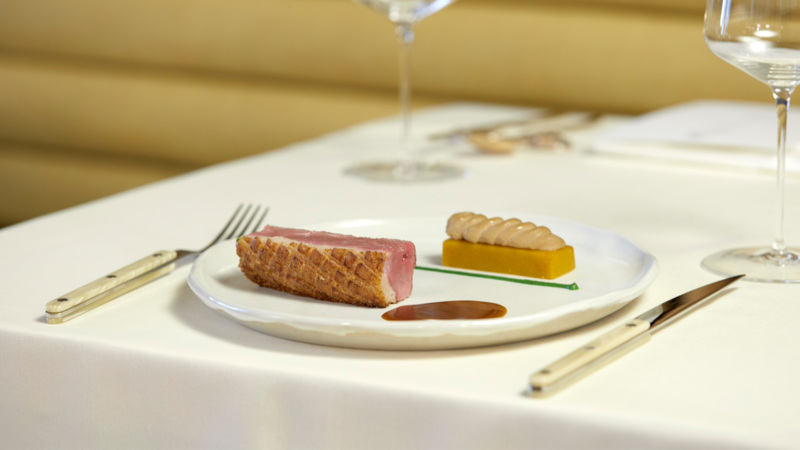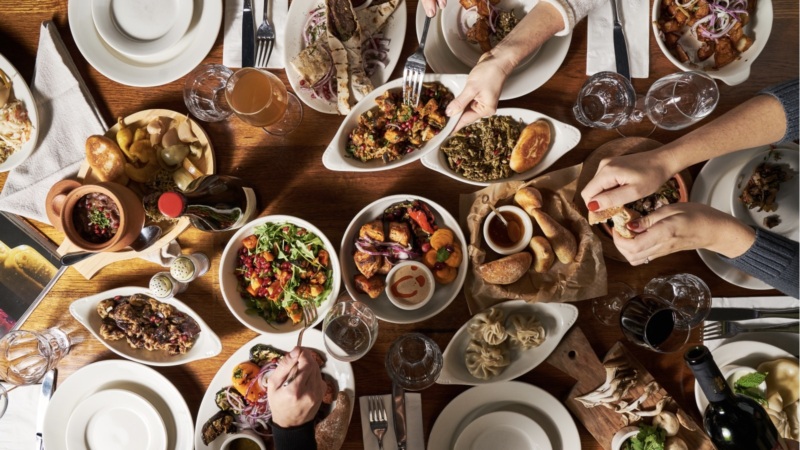
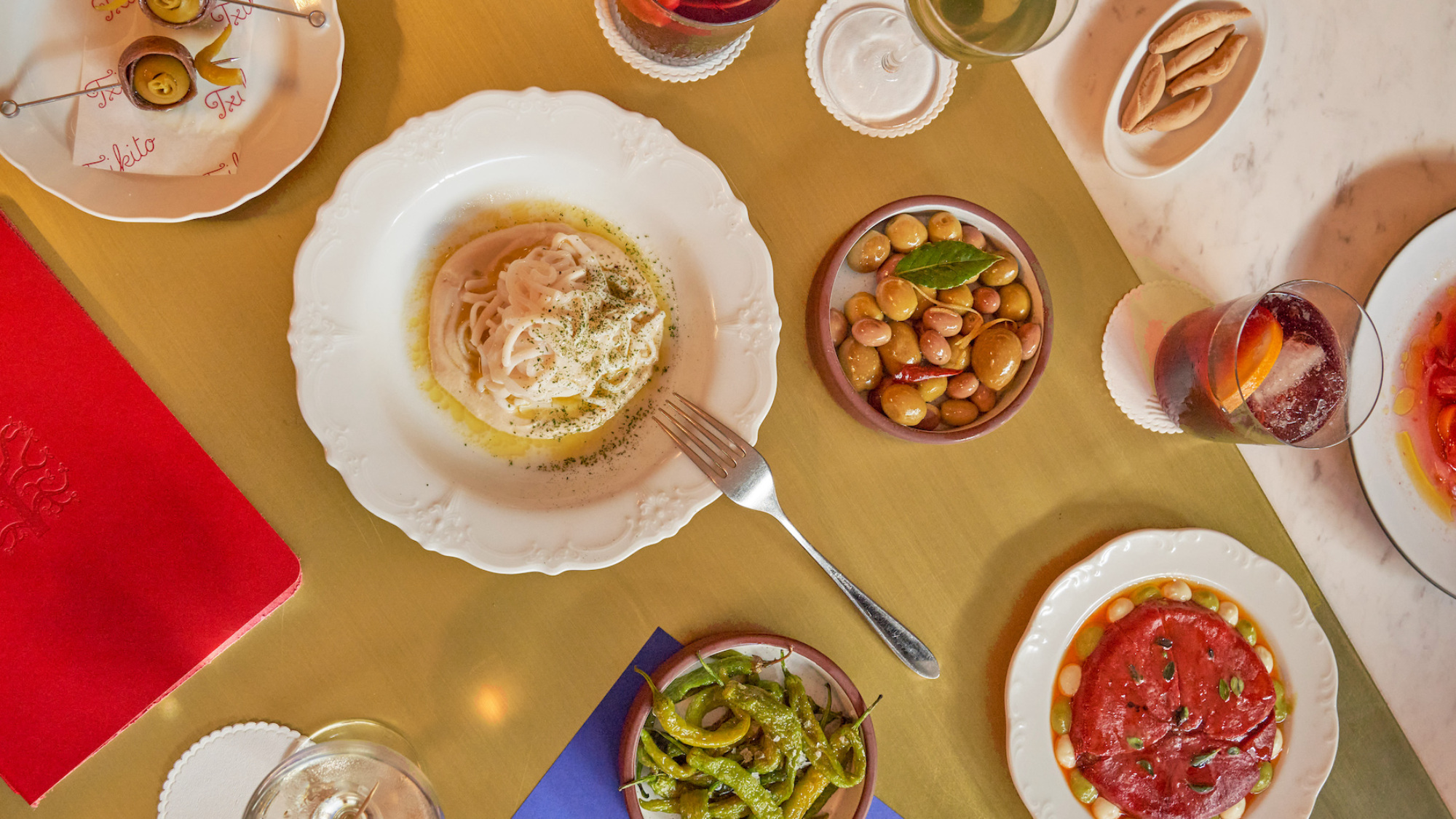
Eight Moments That Changed Spanish Cuisine in New York
For decades, Spanish food in New York was mediocre and monolithic, replete with generic tapas and parboiled-rice paella. The braised Ibérico pork cheeks and mounds of blistered shishito peppers so common on tables today were virtually unknown. Alex Raij, the city’s gran dama of Spanish cooking, remembers when she could only buy a few baskets of shishitos a week at the Union Square Greenmarket. And romesco? That Catalonian specialty was as rare a sighting as an Iberian lynx.
Nowadays, it’s easy to take Spanish food for granted in New York, with the abundance of octopus carpaccio and crispy-thin bikini sandwiches. It doesn’t have the buzz, say, of Korean food or that sentimental attachment many New Yorkers feel to Italian or French cooking. Still, we’re living in an unprecedented window for diners to experience the breadth of Spanish cooking — from homey Galician and Madrileño hangover fare to unadulterated Basque and crack-open-a-can conservas.
So, how did we get here — to a Wednesday night when diners can order San Sebastian-style crab tarts on the Lower East Side and white gazpacho with ribbons of local squid in Cobble Hill? The odyssey involves a fascist dictator, a protruding northwest corner of Spain, one square block of Lower Manhattan, and a sausage maker in Queens.
More from Resy

1. A Bridge to Old-School Galician Cooking
Sevilla, New York City’s oldest continually operating Spanish restaurant, opened on the corner of Charles and West 4th Streets in 1941. Its peers — El Faro, La Bilbaína, and Bar Coruña, among them — have long since closed, but on a Saturday night, Sevilla’s dining room is boisterous and filled with every shade of New Yorker: bros in sweats, ladies in fishnets, families celebrating birthdays, bookish-looking Villagers in booths, and espresso-martini-ordering 20-somethings at the bar. The waiters wear crimson jackets and bow ties, and sangria of the same hue comes from giant plastic jugs. After a few sips, if you dare, you’re transported to pre-shishito New York.
Sevilla harkens back to New York’s earliest Spanish restaurants, designed for the first major waves of Spanish immigration to the city. New York City’s ports and shipping industry attracted coastal Gallegos, who worked as longshoremen, sailors, boiler stokers, and other blue-collar roles. They established enclaves in Red Hook, the Lower East Side, Greenwich Village, and, particularly, in Chelsea on 14th Street between 7th and 8th Avenues (aka Little Spain). But these Spaniards, including groups from Asturias and Basque country, were also excellent assimilators, and over time and generations, their communities faded, and their restaurants lost their regional edge.
However, you can still see whispers of Galician cooking on the menu of Sevilla: pulpo a la gallega, cod-filled empanadillas, mussels ajillo, caldo gallego, and tarta de santiago. There’s also a whole lot of everything else Americans have come to associate with broader Spanish cooking (e.g., paella, gazpacho, and croquetas), along with some real head-scratchers à la shrimp cocktail and spareribs in fruit sauce. If you order shrimp ajillo and clams a la Sevilla, and you’ll have a fine night out.
2. A Chorizo Factory Builds Toward the Spanish Renaissance
If you ate chorizo in New York before the late ’90s, chances are you either smuggled it in from Spain or, more likely, bought it from Despaña. Opened in 1971 as a chorizo factory in Queens, Despaña produced a pimentòn-laced taste of home for Spaniards at a time when the United States banned importation of Spanish chorizo (the country’s serrano and jamòn Ibérico were also a no-go).
The chorizo factory was a bright spot in an otherwise bleak period for Spanish cooking. “What people thought of Spanish cuisine in the ’60s, ’70s, and ’80s was very little beyond paella, and there was insipid paella in New York,” says John Sconzo, who leads gastronomic tours to Spain through his company, Rascal + Thorn.
Not incidentally, those decades corresponded with Francisco Franco’s authoritarian regime. The dictator snuffed out regional dishes in favor of a unified Spanish cuisine. Tripe stews were out, and dishes like paella and the tortilla became synonymous with national identity.
Despite the political and gastronomic climate, Despaña, little by little, set the stage for a Spanish food renaissance. In the late ’80s, they began importing Spanish products — piquillo peppers, bomba rice, olive oils, etc. — selling them wholesale to restaurants and eventually from a storefront in the factory. In 2006, the year after the United States lifted its ban on Ibérico ham, Despaña expanded into Soho with a cafe and retail space stocked with a near full Spanish pantry.
At their Broome Street shop, you can stop in to stock up on gigante beans, Mahón cheese, and tinned razor clams or drop in for home-style morcilla con tomate, croquetas to-go, Basque cheesecake, and exceptional wedges of tortilla. Don’t let Franco’s legacy dissuade you from trying all three varieties: traditional, serrano, and chorizo-green pepper.
3. El Bulli and the Indomitable Spanish Wave
In 2003, The New York Times declared Spanish food ascendent and the world’s hungry gaze fell on Spain. Nouvelle cuisine had fallen out of fashion and, free of Franco, Spanish chefs began to reconnect and experiment with regional cooking. Leading them all was groundbreaking chef Ferran Adrià, whose laboratory-cum-restaurant, El Bulli, unleashed a torrent of experiential dishes and high-concept techniques into the world.
Cooks far and wide took notice and traveled to Spain to brush up against Adrià’s genius; mega chefs like José Andrés, Grant Achatz, Rene Redzepi, and Gaggan Anand all spent time as El Bulli interns. Each season, El Bulli relied on more than 30 (notably unpaid) stagiaires who performed the most tedious of tasks (say, squeezing droplets of faux lentil batter from a syringe into an ice bath for hours at a time) to bring a 30-course tasting menu to life. And if cooks couldn’t snag a spot at El Bulli, they tried to work their way into Arzak, Mugaritz, and El Celler de Can Roca, among other progressive restaurants.
But when these cooks returned to the United States, rather than replicate such conceptual food, they brought back a whole lotta tapas. “People went to Spain for avant-garde cuisine, says Sconzo, “but they also discovered the rising tide of traditional foods.”
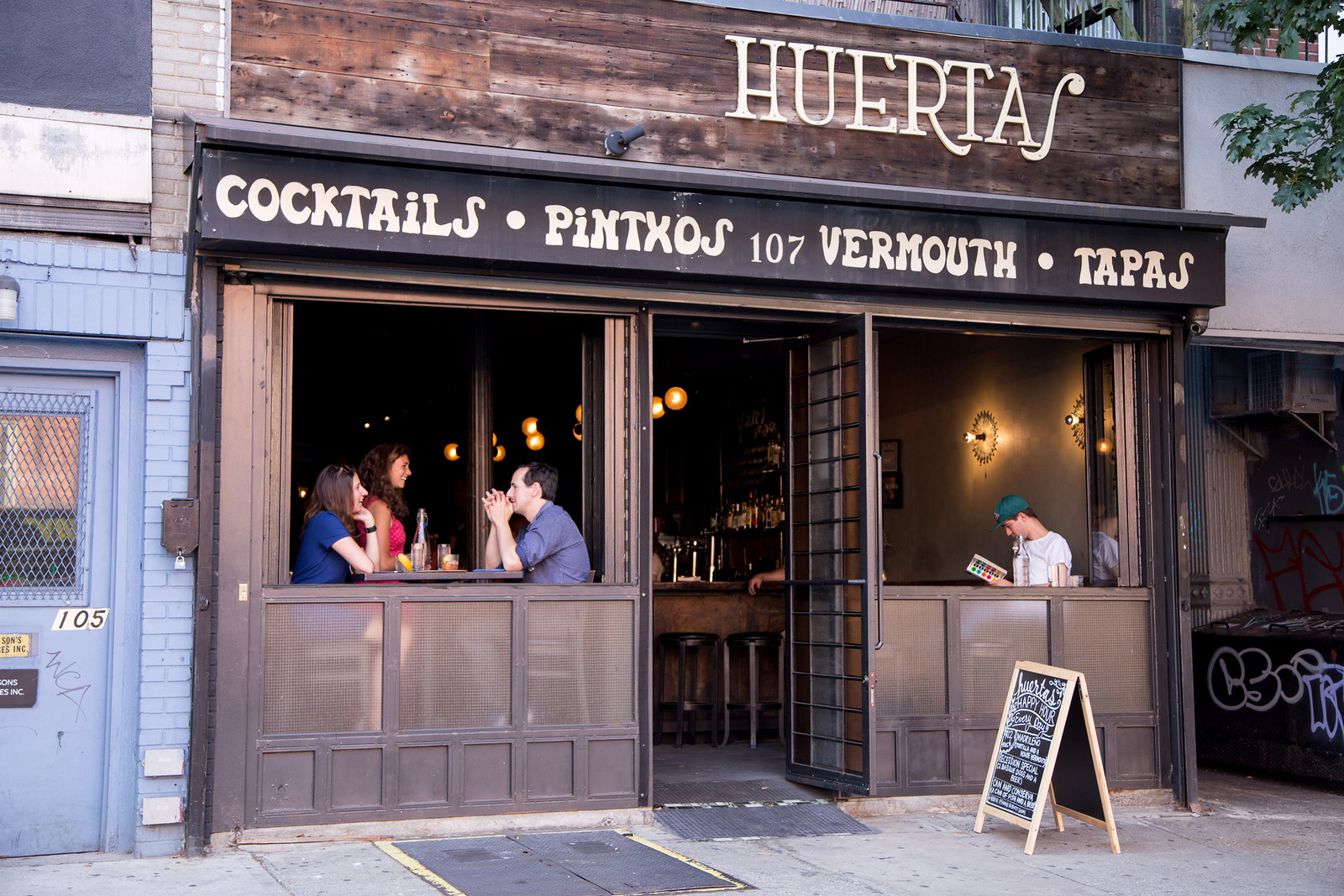

Starting in the early aughts and lasting for a decade, New York saw a steady stream of new Spanish joints. By 2004, diners could suck tiny periwinkle snails from their shells at Tía Pol, where Alex Raij and her husband Ed Montero served as opening chefs (they formally parted with the restaurant in 2010). Along came Casa Mono, Meigas, Boqueria, Socarrat Paella Bar, Ureña, Pamplona, Fonda del Sol, Tertulia, El Colmado, Salinas, Manzanilla, Nai, Huertas. [Editor’s Note: Huertas’ last day in business will be Aug. 12.] In 2009, Terrence Brennan converted his cheese concept Bar Artisanal into a tapas bar (a young Ayesha Nurdjaja, now of Shukette, was the chef). In 2013, Boston chefs Ken Originer and Jamie Bissonnette installed Toro in Chelsea with 125 seats and 59 menu items.
Some of these restaurants were great, critical darlings. Many were not, and most have folded. But Spanish cooking was en fuego in the mid-aughts, with New Yorkers learning to crunch on marconas, savor boquerones, drink cider from porróns, and, yes, order piles of shishitos — largely thanks to the revolutionary spark of El Bulli.
4. Expanding Spanish Cooking at Txikito and La Vara
Raij stuck with Spanish cooking, examining its regional quirks and layers and reimagining it as her own. She and Montero followed up Tía Pol with tapas spot El Quinto Piño (sadly now closed), where Raij created the genre-busting, fan favorite uni panino (RIP). Next came Basque specialist, Txikito, opened in 2008.
“The most important thing was I wanted to go from general to particular. What we were proposing was to create a new standard for Spanish food and make it current using the best products from the green market and imported products. We wanted to reframe the conversation about regionality,” she says.
After its pandemic closure, Txikito relaunched last fall, with a perspective that’s part Raij and part Basque, Montero’s home region. “We’re not cooking traditionally. We don’t sell the tropes. If we do, it’s because we made them tropes,” she says.

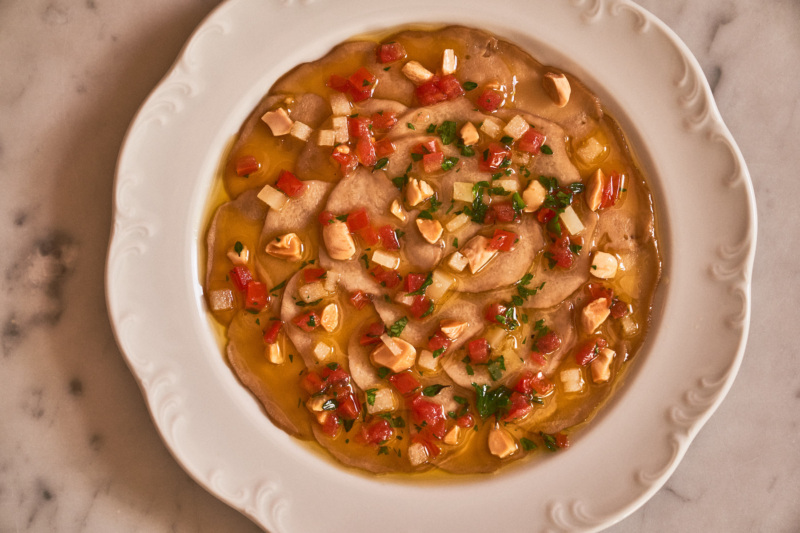
On the menu, you’ll find salt cod croquettes, patatak (aka patatas bravas), and octopus carpaccio but also an irresistible king oyster mushroom carpaccio with olive oil, tomatoes, crunchy almonds, and Idiazábal cheese. Her whimsical, vintage-looking Rusa is a layered potato salad with two types of house mayonnaise, English peas, olives, and bonito for an umami boost.
Opened in 2012, La Vara, Raij says, came out of frustration that Jewish and Moorish contributions to Spanish cooking had been buried. The Brooklyn restaurant reimagines what food would look like if these religious refugees returned to Spain with diasporic ingredients like grape leaves, tahini, dukkah, smoked eggplant. There’s room to explore her own Argentinian Jewish story there too; the restaurant’s suckling pig is served, notably, with tximitxurri, the Basque predecessor of chimichurri.
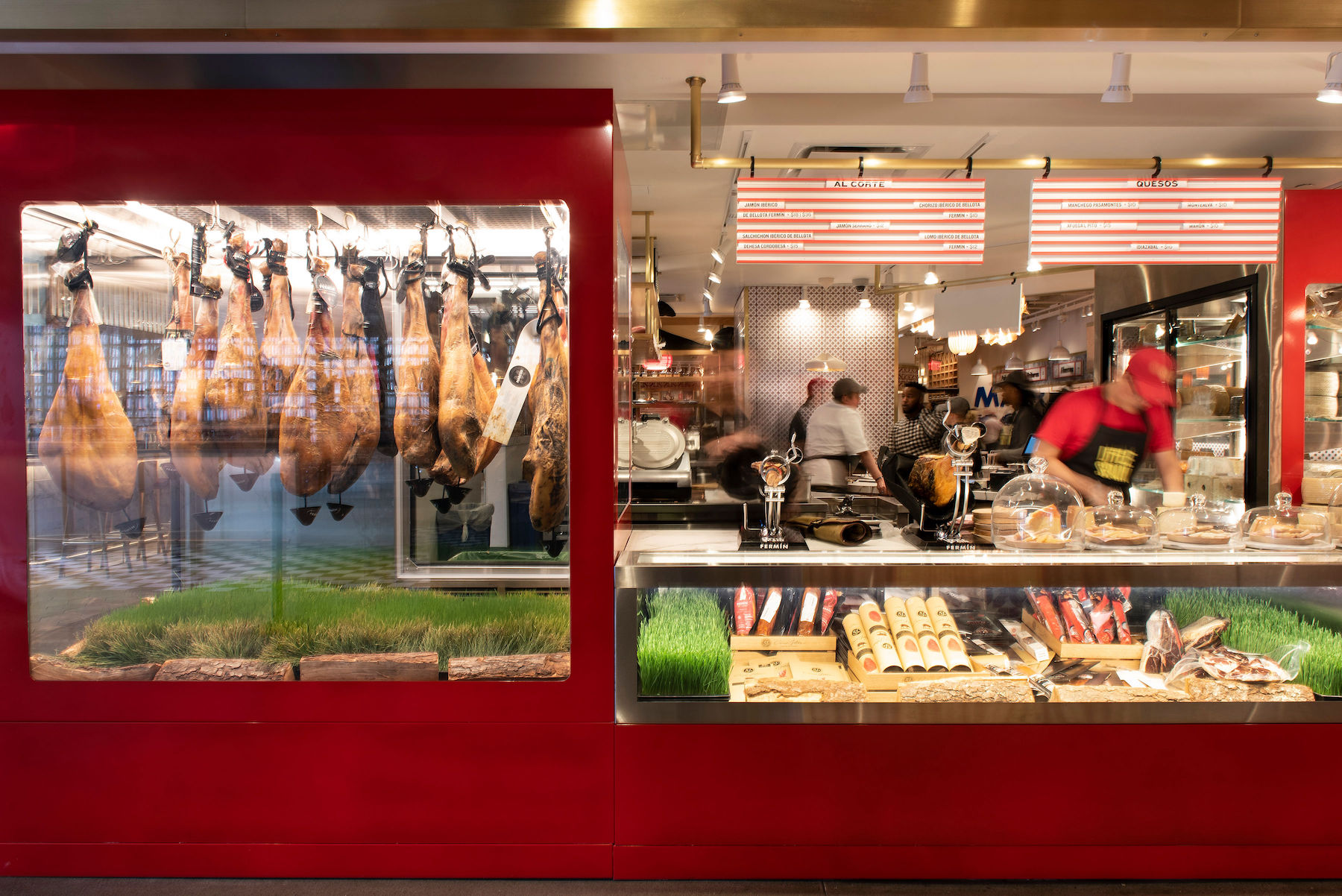
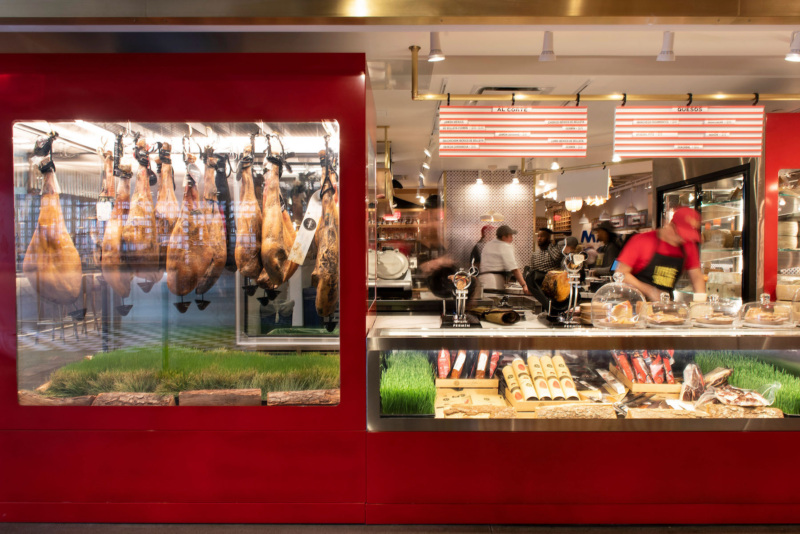
5. José Andres Enters New York
With characteristic fanfare, José Andrés brought Mercado Little Spain to Hudson Yards in 2019, partnering with Ferran and Albert Adrià to create a Spanish wonderland of a food hall and three sit-down restaurants. At the time, The New York Times’ Pete Wells declared of Little Spain, “As a general rule, everything is good,” including the churros, paella, crispy cochinillo, and sheets of huevas de mujol (aka bottarga).
It was a full circle moment for Spanish cuisine in the United States. Andrés and Adrià had a falling out in the ’80s after Adrià rescinded an offer for Andrés to work as a full-time El Bulli staffer. The spat, in turn, drove Andrés to move to the United States and launch what would become a 30-plus-restaurant empire.
Mercado Little Spain cannonballed the megachef into New York, a city primed for roasted octopus, gazpacho, and albondigas. During the pandemic, and along with their mall landlord, Mercado Little Spain lost some of its energy. Kiosks sat empty, and diners were slow to return en masse to food halls. But on a recent Monday night, the dining room of Spanish Diner pulsed with hungry four-tops, and servers brought out a parade of hit dishes that felt like they could have been plucked from Andrés’ travel show, “José Andrés & Family in Spain:” potato chips topped with mussels escabeche; rich, gushing chicken croquetas; fava bean-chorizo-morcilla-pork-belly stew from Andrés home region of Asturias; and a joyful plate of fries, jamón, and fried eggs in the style of Madrid’s Casa Lucio. There, it’s advisable to polish off a bottle of Txakolina with a friend, or tip back a pórron with abandon.

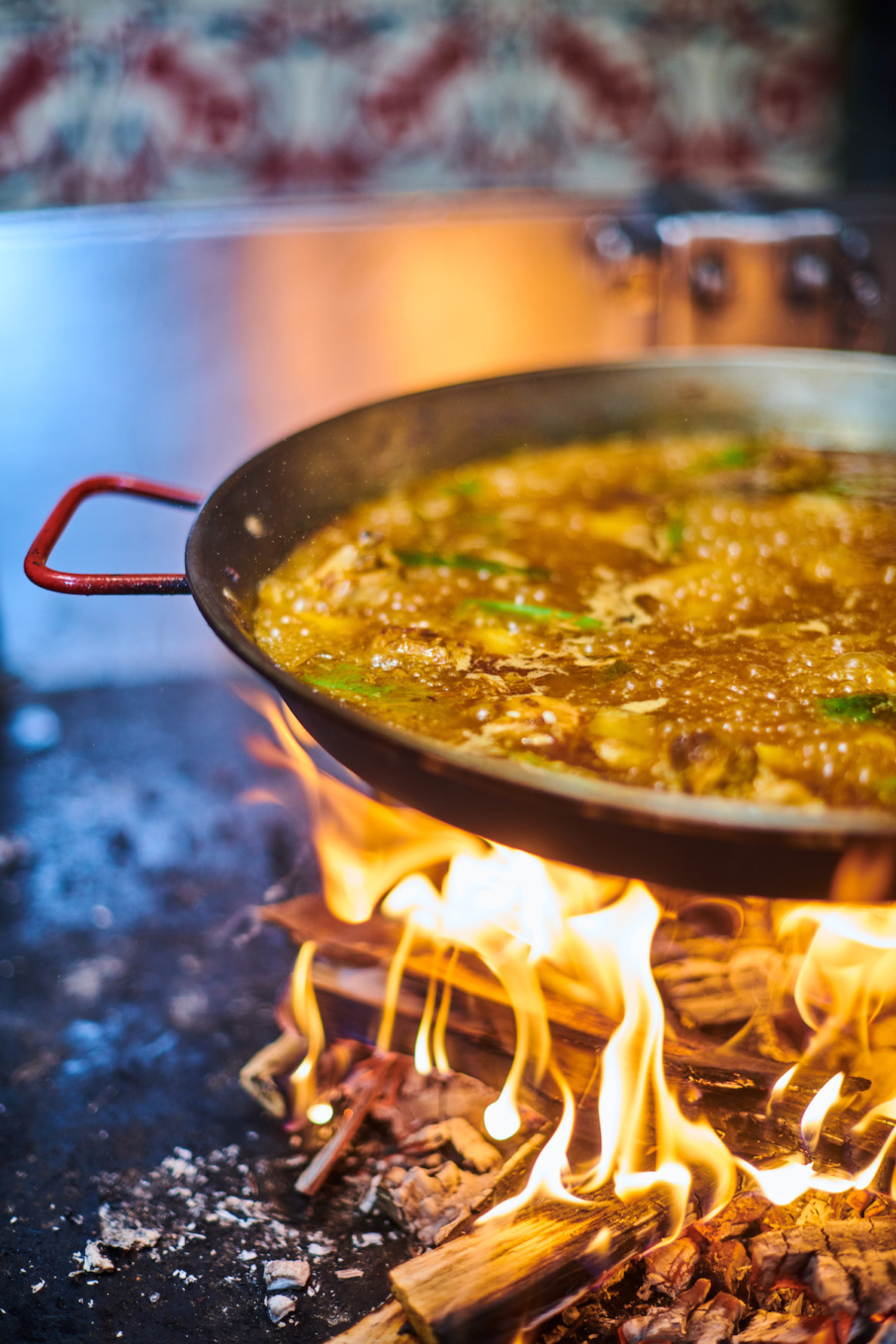
6. Ernesto’s, a Restaurant From the Last of the Stagiaires
It took more than a decade for Ryan Bartlow to return to Spanish cooking with Ernesto’s on the Lower East Side. Bartlow was one of those cooks who flocked to Spain in the early-aughts, landing at Michelin three-star Akelarre in San Sebastian for two years. As opposed to the stagiaires at El Bulli, he rotated between stations, learned butchery, and absorbed the techniques and feeling of traditional Basque cooking.
At Ernesto’s, Bartlow’s menu features pintxos like the ones he ate on days off, plus creative edits on Basque fundamentals like bomba rice with rabbit and snails. He’s also cooking the types of dishes Akelarre served to families during lingering Sunday lunches: braised tripe, bacalao en salsa verde, and morcilla with sepia.
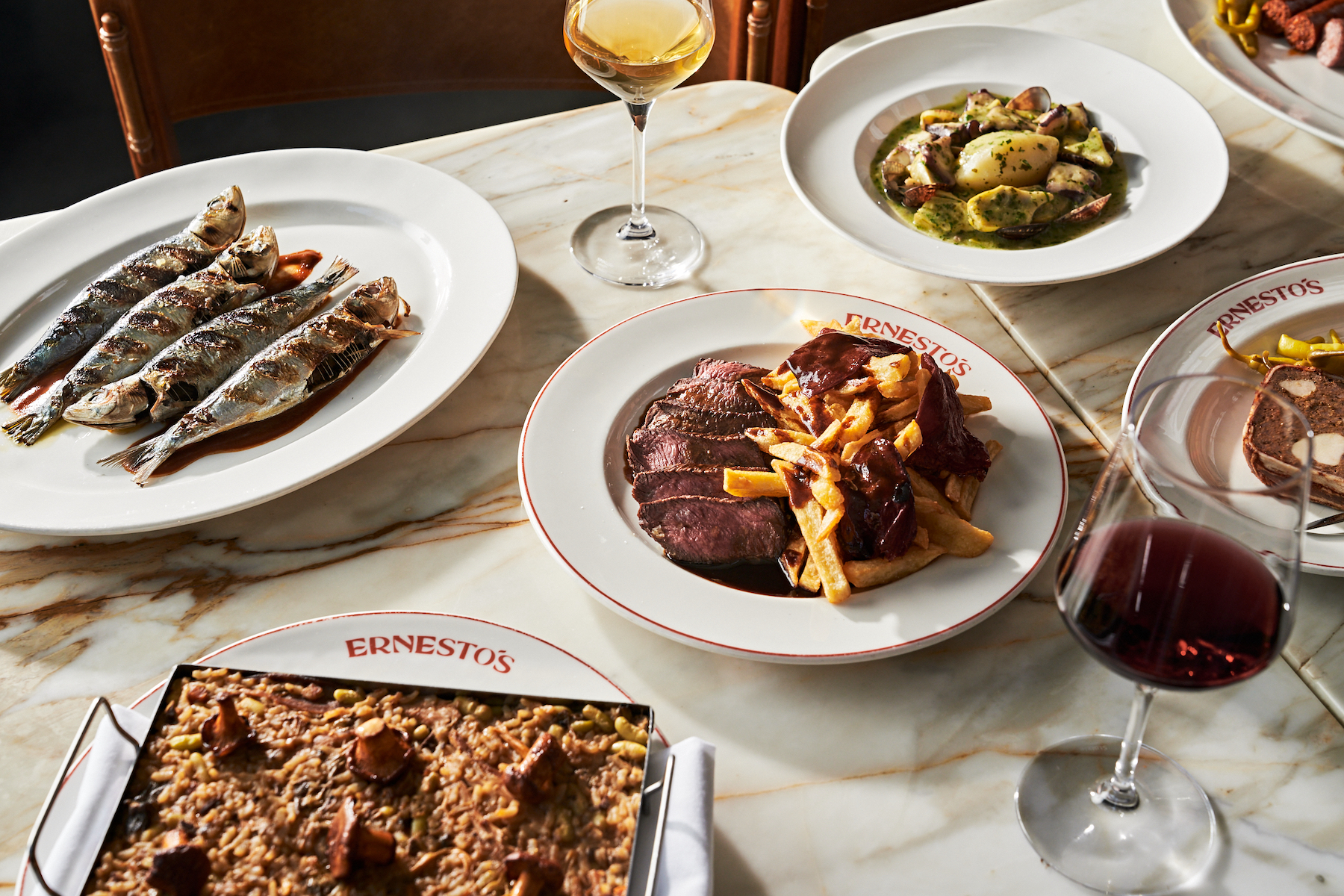
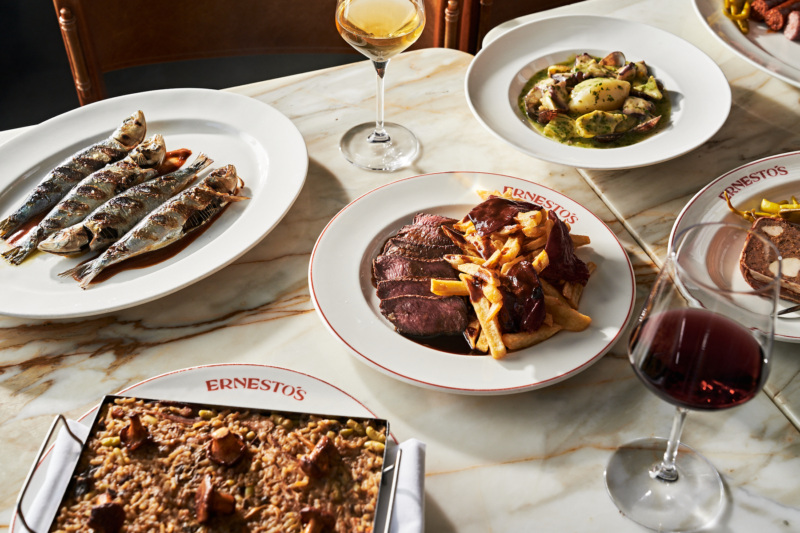
“I watched people. I wrote down recipes in my little leather-bound notebook. It’s now my bible,” says Bartlow, who, upon his return from Spain, worked for Grant Achatz at Chicago’s Alinea before stints at Frankie’s Spuntino, Quality Eats, and Frenchette in New York. “I think what’s cool about what we do is that we’re really showcasing fundamental, classic cooking.”
In New York, Bartlow, who’s 40, may represent the end of an era. After El Bulli’s closing in 2011, the international spotlight moved from Spain to Nordic countries, and, in general, has become more diffuse with the World’s 50 Best list driving El-Bulli-type diners and stagiaires to every corner of the globe.
“I’m not too connected or even interested in some of these lists, because it doesn’t really reflect my philosophy per se,” says Bartlow. “Honestly, I don’t know where kids are staging. It’s a different era.”
7. Old Little Spain, Updated
Andy Warhol ate at El Quijote. So did Janis Joplin and Patti Smith. The restaurant in the Chelsea Hotel, in the heart of the original Little Spain, fed generations of artists and New Yorkers on the cheap — its food less memorable than the party. Though it had lost its luster, loyalists mourned the restaurant’s closing in 2018.
El Quijote’s post-pandemic relaunch four years later coincided with New Yorkers’ rekindled love for old New York glamour, and the restaurant delivered it with a historically faithful renovation (the Don Quijote murals remain, though decades of tobacco smoke have been cleared) and menu overhaul courtesy of Jaime Young, culinary director of Sunday Hospitality.
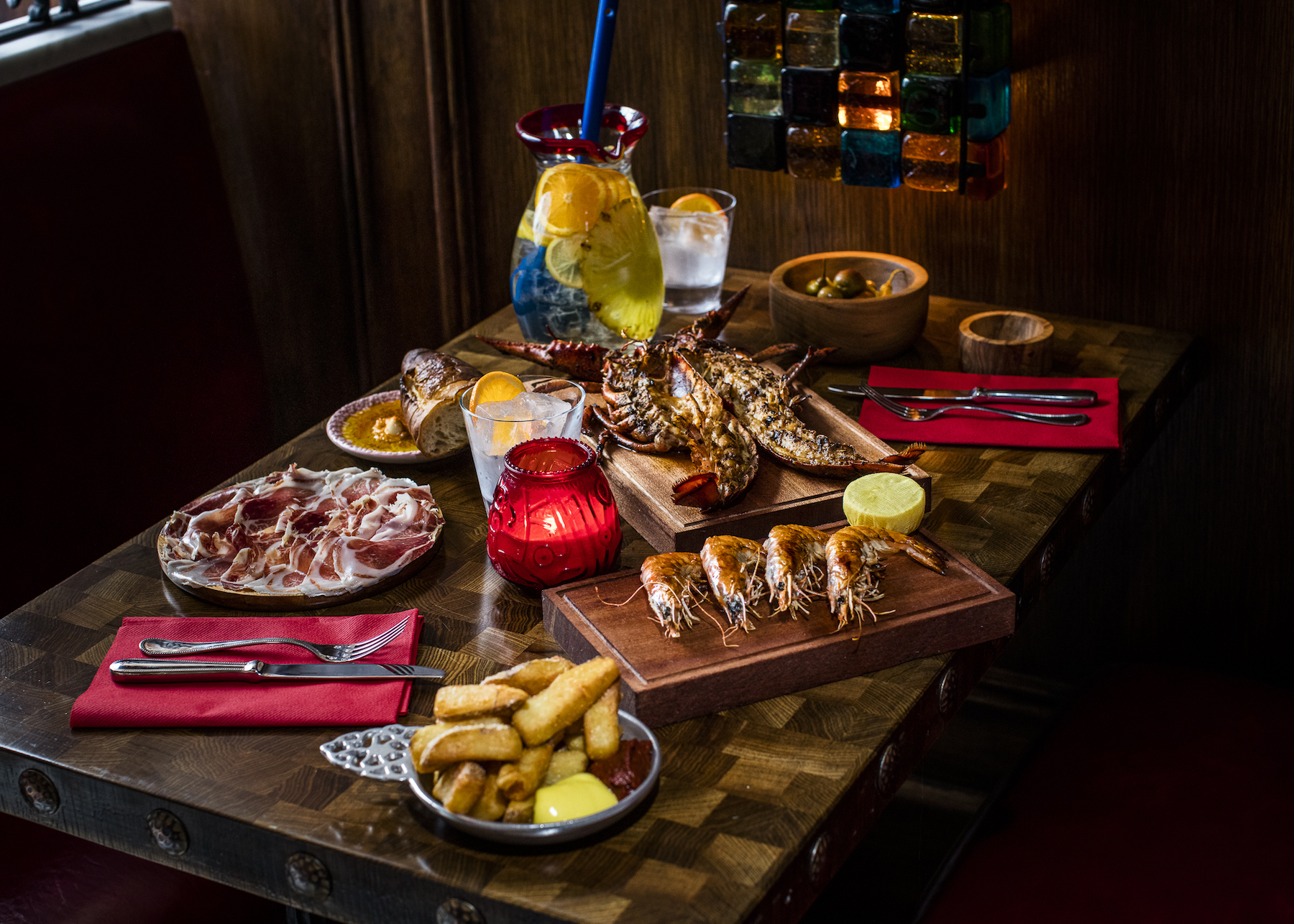
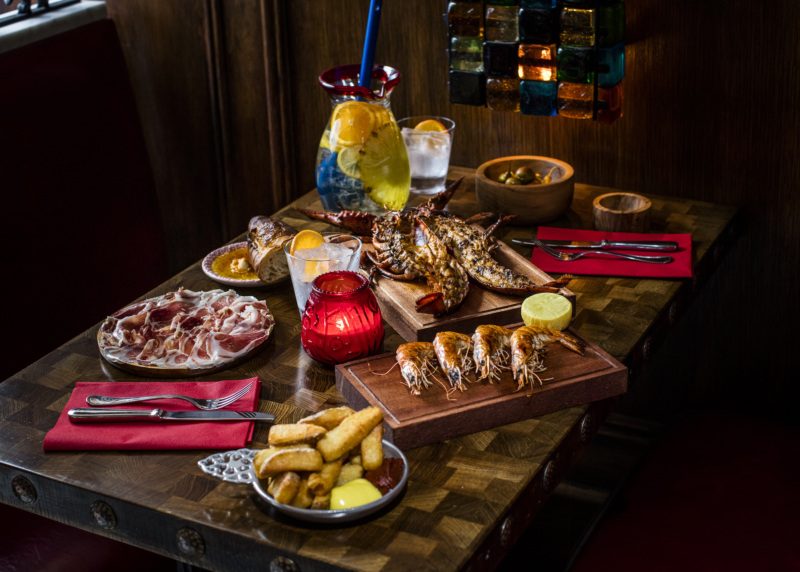
Young and his team researched old El Quijote menus, he says, but ultimately decided to take the food in a more regional direction, focusing on Catalan and Basque cooking. Nostalgia is a strong drug though. “We’re seeing diners who enjoyed the restaurant as it was in the past missing some mainstay staples,” says Young, whose team has started to re-engineer and revive some of the old hits.
That pull of old and new — plus pan con tomate souped up with garlic confit, head-on gambas en salsa verde, and shellfish loaded paella de mariscos — have diners spilling out onto the 14th Street sidewalk. Bodies press together in every refurbished wooden booth. And guests, rightly, clink sherry cocktails, gin and tonics, and sangrias of the sort you won’t regret the next morning.
8. The New Spain
Last year, chef Ruben Rodriguez added to his restaurant collection, Emilia by Nai, an ode to his Galician roots and grandmother. But if it weren’t for the shelves stocked with pimentón and olives, a diner ordering a crispy maitake sando and cauliflower with mussels and Burgundy truffles could be forgiven for forgetting they’re in a Spanish restaurant. The lines have been blurred, too, at Il Buco, once a strictly Italian restaurant that now nods to the Iberian peninsula thanks to chef Roger Martinez, a Barcelona native who cooked with Adrià.
“In the future, you will see two dynamics,” says Angélica Intriago, co-owner of Despaña. “Traditional restaurants are fading away, and then you see the new generation of chefs that are not strictly Spanish.”
Today, restaurants of all stripes, says Intriago, cook with Spanish ingredients (octopus, marconas, and olive oils) and techniques (where would New York be without its wood-fired Etxebarri-inspired grills?). Chefs pool romesco beneath roasted carrots and asparagus and send it to tables in little bowls for dunking; it may as well be a mother sauce these days. New Yorkers have especially fallen for conservas, and at Greenpoint’s El Pingüino you can dig mackerel, mussels, cockles, and sardines straight from the can — most of which hail from Galicia.
Where to Have Spanish Food in New York Right Now
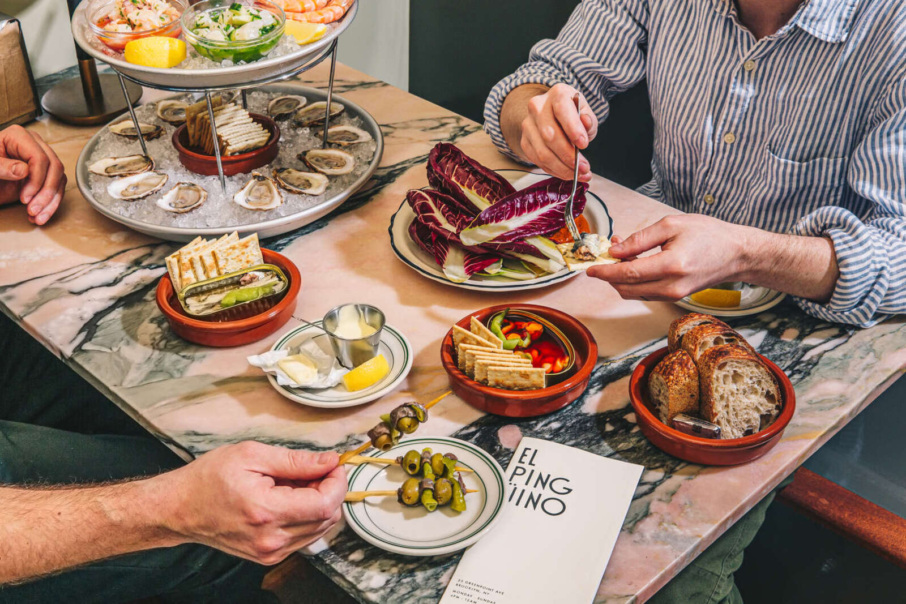
Bar Vinazo: A Spanish wine bar with small bites, from the duo behind Fausto and LaLou.
Boqueria: Tapas at four New York City outposts.
Casa Dani: Seafood cuisine from the Spanish Mediterranean.
Casa Mono: Modern small plates with a killer ham selection.
Despaña: The go-to purveyor of Spanish ingredients in New York.
El Pingüino: A conservas specialist. Don’t sleep on the daily happy hour specials.
El Quijote: A classic that was recently reborn.
Emilia by Nai: New Spanish cooking, plus seasonal paellas.
Ernesto’s: Inspired, traditional Basque cooking.
Huertas: All the small plates: pinxtos, tinned seafood, and not-quite-classic tapas. Note: Huertas is closing on Aug. 12 after nearly a decade in business.
Il Buco: Italy meets the Iberian peninsula.

La Vara: A culinary reflection of Spain’s Jewish and Moorish diaspora.
Mercado Little Spain: Food hall, specialist grocer, and restaurant complex.
Nai: Galician roots, global pantry.
Salinas: Regional Spanish cooking with creative liberties.
Sevilla: One of the few OGs still in business. Walk-ins only.
Tia Pol: Tiny Chelsea tapas spot.
Tomiño Taberna Gallega: Precise, comforting Galician cooking
Txikito: Dinner as transport to Basque country.
From June 11 to 18, 2023, a select number of Spanish restaurants in the city offered special prix-fixe menus centered around Spanish tapas as part of US Tapas Week.
Participating restaurants include Mercado Little Spain, Oliva Tapas, Lamano Chelsea, Lamano West Village, Tomiño Taberna Gallega, Huertas, and Salinas.


